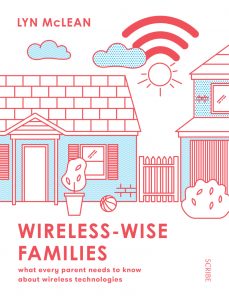Smart Meters – What Can Be Done?
Smart meters have been rolled out in many parts of the country, have you got one?
Given I am so immersed in this kind of technology, I am always surprised when someone hasn’t even heard of them. 🙂
So, let’s start with what they are.
What are Smart Meters?
A smart meter is a relatively new type of electricity meter.
We all had analog ones. These new ones are digital, and the majority of them transmit information back to the power companies.
Please note, that not all of them do.
The move to smart meters in Australia has at least several reasons that I can figure out:
- They don’t need to be manually read, as the data can be transmitted – saving the power companies money;
- It was decided that they would be rolled out in Victoria after the terrible fires we had some years back that were caused by power lines coming down. If smart meters were installed, they could shut down the power and it is hoped that this would then prevent this from happening again; and
- As part of the bigger picture of the Internet of Things (#IoT) and #5G, they can talk to devices and turn them on and off…
What is So Different About a Smart Meter?
In a nutshell, smart meters transmit information wireless (thus utilising radiofrequency EMF).
This is both the benefit AND the issue.
What is Wrong with Smart Meters?
Aren’t they Smarter?
No, they are not. When they first came out and sensitive people began experiencing symptoms, many of us were calling them “Dumb Meters!”
Smart Meters emit four different types of electromagnetic fields (EMF).
- Radiofrequency EMF – as already mentioned, this is the wireless technology. This can pass through walls and travels quite long distances.
- “Dirty Electricity” (High Frequency Transient Spikes) – due to the fact they contain an inverter. This type of EMF is on the wiring, but can emanate into a room through the walls.
- Magnetic Fields – from the wiring. This also passes through walls, but levels drop off very quickly with distance.
- Electric Fields – from the wiring. Although this type of EMF can pass through walls, it is seeking the fastest route to earth. So, it may easily bend to reach earth if a good conductor is nearby. (Think of lightning hitting the tallest tree.)

Any issue with that?
All of these types of EMF are at far higher levels than what we are looking for from a health perspective.
When ours was first installed, the power company offered to send me their literature to allay my concerns. Having waded through the 100-ish pages, I found that smart meters emit magnetic fields at 17 mG. From a health-perspective, we are looking at 2 mG for daytime exposure and 0.2 mG for bedrooms.
The power companies claim that they only transmit wirelessly up to six times a day. Whilst it may be true that the information is only received up to six times a day, they are emitting 24/7 and spike (rapidly reach a much higher level) frequently.
Instead of helping, my concerns were heightened!
Early in my career as an Indoor Environmental Health Consultant it became very clear that the levels emitted, and the fact that EMF is being emitted 24/7 (and we can’t turn it off), many people I encountered had reached their tipping point. This has resulted in* these people to develop a heightened sensitivity to EMF, with symptoms varying from insomnia, muscle tension, vivid dreaming, grinding their teeth (bruxism), ringing in the ears (tinnitus) and so on.
*These symptoms are anecdotal – I have accumulated this list from what has been reported to my by clients.
My stance is that it is never one thing that causes heightened sensitivities, but it can easily be one thing that “breaks the camels back.” That said, it is vital that we reduce all environmental stressors, particularly for when we are asleep.
What Can Be Done?
- Not get one – if you have the chance to not have one installed, please avoid doing so.
- Have it removed – in some areas, people have been able to have them removed. Occasionally, they have to pay more per year someone manually needs to read them. (Worth it, I think!)
- Have the chip removed so it can’t emit wirelessly – this will solve the issues of one of the four types of EMF.
- Move the aerial – if you contact your energy provider, they may be able to put the aerial on the roof.
- Have your power company “power it down” – smart meters can function quite well at around 5% (or less in some cases) capacity… and they are installed and set at 100%. Note, that not all smart meters can be turned down.
- Shielding – done with care can be a simple and effective solution. In most cases, it should be able to be done for less than $300.
What If I Am Renting?
No problem, shielding can be effectively installed in such a way that you can take it with you.
Can’t We Just Buy a Cage or Wrap Smart Meters in Aluminium?
NO!
Both of these options can result in the meter working harder to get the signal out. This results in much more “force” being required to get the signal out, causing it to emit at higher levels.
So How Can I Shield it Properly?
I get asked that a LOT… so I have made this easy-to-follow guide packed with expert tips for homeowners AND renters.
#smartmeters #EMF #radiofrequency #electricfields #magneticfields #dirtyelecticity #shielding





